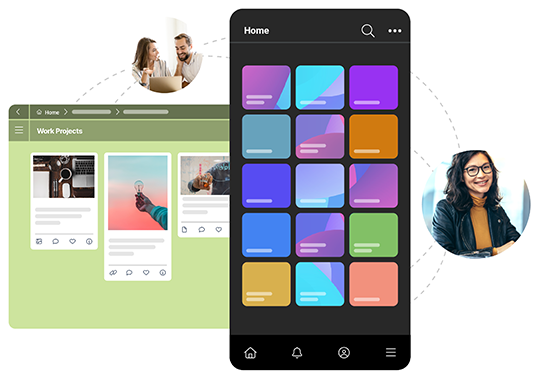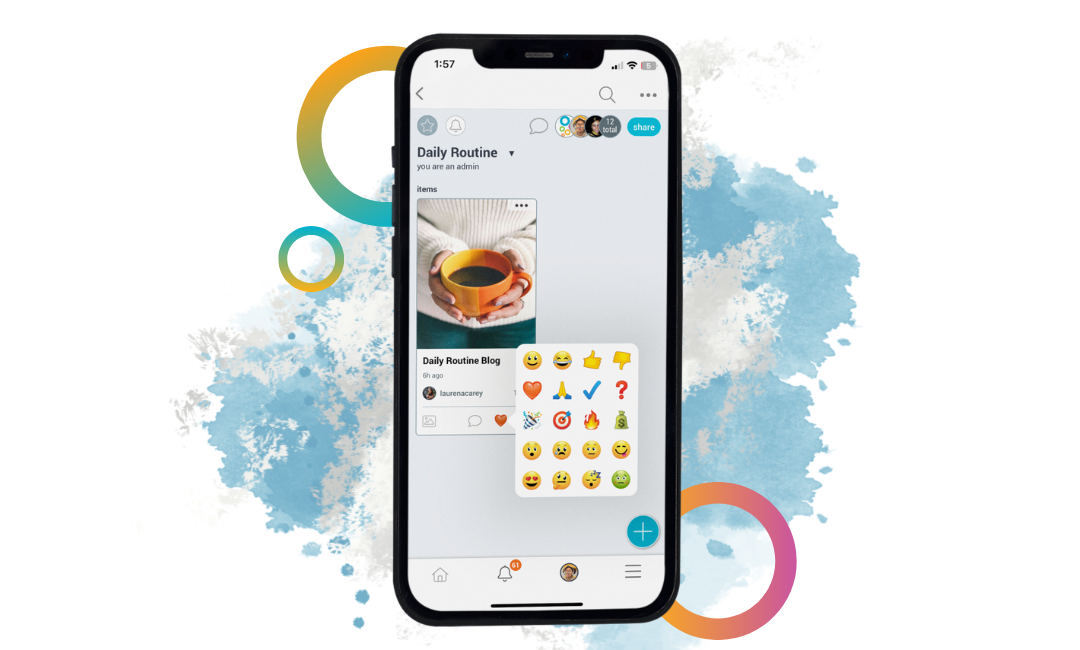It’s no secret that time management is critical to increasing your day-to-day productivity. But how you balance your routine makes a substantial difference in how much you can achieve in one day. Taking the time to make a daily schedule ensures that you’re spending your work time in a focused way while saving your other time for other aspects of your life, including your physical and mental health.
To begin managing your daily routine, you’ll want to sign up for the best digital productivity tools and services. Need to organize all of your digital files and task lists in a single, easy-to-use location? Bublup might be the best productivity app for you. With secure cloud storage, straightforward uploading options, and shareable Group Folders, you can save all of your work in one accessible place. Make task checklists, write your notes, and invite your coworkers and collaborators to comment and react to your work.
Make a List of What You Want to Accomplish
Setting up an effective daily schedule starts with identifying your goals, from the small details of your weekly tasks to your overarching plans for the next six months. Chances are, there are a few things that you’ve always wanted to accomplish but haven’t found the time or motivation to get done. Bublup’s online note-taking feature is the perfect place to start this list if you haven’t already. You can quickly edit and rearrange your list on the go without the hassle of sending the notes file between devices.

Your goals don’t always have to be related to your current job or career. For the sake of listing everything out, you should include personal objectives in addition to your professional goals. You might have plans to begin a new exercise routine, spend more time with your family, or finish more books. These are examples of goals that can influence how you set up a routine for your day.
Prioritize Your Recurring Goals
Now that you have a running list of things you’d like to accomplish, you’ll need to decide which items on the list are the most important to you. If you’re unsure what to prioritize, you can start by organizing objectives based on each item’s daily time requirements. Each of the goals you set, whether they are catching up on emails, lifting weights, or simply spending more time relaxing, becomes more doable once you’ve identified how much time you need. Once you’re ready to set up a formal to-do list, you can take advantage of Bublup’s handy digital task list feature.

Schedule Tasks Based On Your Energy Levels
Are you a morning person or a night owl? Do you have more energy on Mondays or on Fridays? When you’re arranging your tasks within your daily digital schedule, you should play to your strengths. If you know there are certain times when you have more focus, or perhaps fewer distractions to deal with, you should assign the most challenging tasks to these time blocks. Your energy levels throughout the day typically depend on what’s known as your sleep chronotype, which is something you can also plan around with when you’re setting up your schedule.
Take a Break (or Three)
Sometimes, it’s easy to forget that it’s time to take a break, particularly when you’re working from home. On the other hand, it’s equally possible that the distractions in your environment are interrupting your workflow and preventing you from accomplishing your goals. The solution to both problems is scheduling a handful of times throughout the day where you’re committed to taking a break from your work.
It’s always a good idea to get up and move every now and then, particularly if you’re used to spending most of your time sitting at your desk or staring at your computer screen. When you come back to the task at hand, you’ll feel more refreshed and energized. And because your breaks are scheduled, you won’t feel guilty about stepping away from your work either.
Get Out of the Multitasking Habit
While balancing two projects or tasks at the same time might feel like a natural method for getting things done, it may lower your productivity and leave you feeling burnt out significantly faster. Working on one objective at a time increases your focus and allows you to dial in your work efforts in a more efficient manner. To stop your multitasking habits, consider assembling your daily schedule in a way that gives time to each item on your to-do list, rather than an unspecified block of time that’s open to a handful of tasks at once.

Don’t Forget About the Daily Essentials
Creating a daily schedule isn’t just about accomplishing more during work hours. It can also help you set up healthy habits during the other parts of your day. Review how much time you’re devoting to meals, exercise, sleeping, and spending time with family and friends. Most adults need at least seven hours of sleep each day. If you’re not hitting that mark, your daily schedule can help you change that. If your work schedule doesn’t allow for enough time to eat lunch, consider adjusting your routine to prioritize your health and wellness.
Leave Space for Unscheduled Time
When you’re assembling your daily schedule or adding a new routine to your lifestyle, you’ll want to make sure that you’re still leaving a few hours of the day open to unexpected changes in your plans. Flexibility within your schedule can help you conquer a range of hiccups, from mood swings to sudden emergencies. It can also ensure you have plenty of time to stay engaged with your goals, as well as step back and evaluate your progress from time to time.

Conclusion- How to Make a Daily Schedule To Increase Your Productivity
Managing your time throughout the day doesn’t always have to be a hassle. Setting up a daily schedule is a fantastic method for increasing productivity, creating new healthy habits, and identifying your personal and professional goals.

Bublup is a fun and engaging place to get started with setting up your daily schedule. Sign up for a free account with us today and experiment with our visual file storage, handy checklist feature, and straightforward note-taking tools, all of which are accessible from any device or location.












